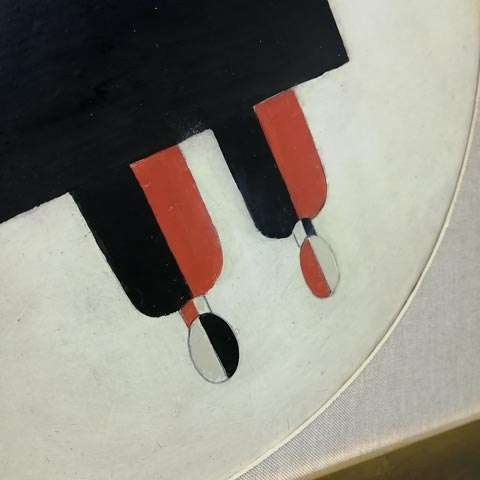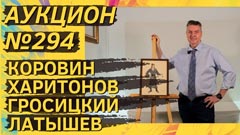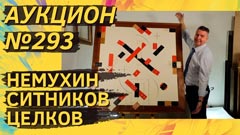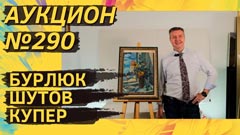
The fact that prices have risen noticeably over the past year is a common feeling among collectors. Some whistle in surprise: “Wow!” And someone grumbles: “You've made everything expensive”.
Let us not rush to generalizations. Although, as we know, there is no smoke without fire.
Knowledgeable people have correctly noted that in the last six months, the prices of some of the first names in unofficial art have “shot up”. Gouaches by Vladimir Yakovlev, which were sold for between 400,000 and 500,000 rubles six months ago, are now priced at between 700,000 and 800,000 rubles, while regularly hitting the one million mark. Petr Belenok's large works in mixed media, which were sold for around 300,000 a year ago, are now sold in the 500,000–700,000 range. And drawings that were for 100,000–150,000, today cost 250,000–300,000. And there are many such examples. In particular, “trophy” works by Anatoly Zverev, Vladimir Nemukhin, Evgeny Rukhin, Vladimir Weisberg, Eduard Steinberg, Ülo Sooster, Igor Vulokh and several other unofficial artists have greatly increased in value. So? It turns out that everything really did suddenly grow 2–2.5 times?
So, and not so. The devil, as always, is in the details.
Let's start with “everything got more expensive”. Let's figure out what has gone up in price? The whole field or just certain names? Or not even names, but specific works? At what level has the price gone up at times? In what price range?
Only one thing can be stated unequivocally. Over the past year, the best works of the first names in the highest price range were the most fiercely haggled over. Collectors fought fiercely for masterpieces and works close to them. That is, wherever there were investment-quality pieces, buyers were not deterred by the price, even at a few million. But this does not mean that all of Yakovlev, all of Belenok, all of Zverev, and all of Nemukhin went up in price. Not at all. Sketches, drawings, things of medium quality — demand for all that remained very modest, prices in this segment were not rising, and sellers willingly met buyers in prices. It was not easy to sell the “economy class” over the last year, even with noticeable discounts. And this applies not only to the first names. According to our observations, the entire middle and lower price segment has been stagnating for a year now. Sometimes it's easier to sell a painting for 400,000 rubles than a drawing for 40,000. So there are no miracles here. No “everything has gone up in price”. And on the whole, this trend quite “beats” with the general situation in the country: during the crisis, the middle class has been hit hardest, while the well-off people are more or less fine.
How could there be talks of a general rise in prices? Where do they come from? There is an explanation. During the pandemic and post-pandemic period, high-end works that had previously remained in private collections for decades became more common on the market. And it would have gone on like this for a very long time. Only a sudden need to close some financial holes forced the owners to think about selling. And then this is what happened. As soon as the first masterpieces went up for auction, everyone saw that a million for Yakovlev — not the limit. And this news has started a chain reaction mechanism. The owners of masterpieces, looking at the success of others, made the right conclusion: “It's time to sell. At such prices it will already suit us”. And about a month after the first local records, a queue of strong things lined up. Chronologically, this happened at the beginning of 2021. Naturally, most of the high-quality works were bought up by non-poor people on a competitive basis. And after the next local records were updated, the myth was born that all art had skyrocketed in value.
What will happen next? Probably, in the coming months, the vector will continue. In the high price segment the competition will grow even stronger. Again there will be more money than worthwhile paintings. It is already clear, that this summer our own government and European authorities will help to save money on vacations. So at least the history of last year will repeat itself, when instead of Spain and Italy people bought paintings. The second assistant of the Russian art market is oil. On April 27, 2020, a barrel was worth $ 19, and on April 26, 2021, it was $ 66. What is there to talk about! There are other factors, too. People's determination to invest in paintings is influenced by increased inflationary expectations: the risk of depreciation of the ruble, and of the dollar, too. And another important factor is the degree to which foreign policy is peaceful. It has been noticed that as soon as they stop bringing guns to the border, then many things begin to get better at once: the ruble exchange rate is growing and the mood of investors is improving. If the peace-loving trend persists for some time, then the prices of high- quality paintings will continue to rise. Such is the uncomplicated connection.
Summary. Those who look at art from an investment perspective should take note of the best pieces by the following authors: Anatoly Zverev, Vladimir Yakovlev, Vladimir Nemukhin, Oscar Rabin, Petr Belenok, Eduard Steinberg, Mikhail Chemiakine, Vladimir Yankilevsky, Yuri Kuper, Igor Vulokh. And the key phrase here is “the best things” — that is, preferably the best of the best. This means that we should choose valuable period, the main themes, and only the most inspired works, which are confirmed by expertise. Let us not be given to choose the times and know how it will turn out. But it is a question of money and desire today to meet the future surrounded by high quality paintings. The opportunities still exist.
Vladimir Bogdanov, specialist of ArtSale.info auction
- Log in to post comments










